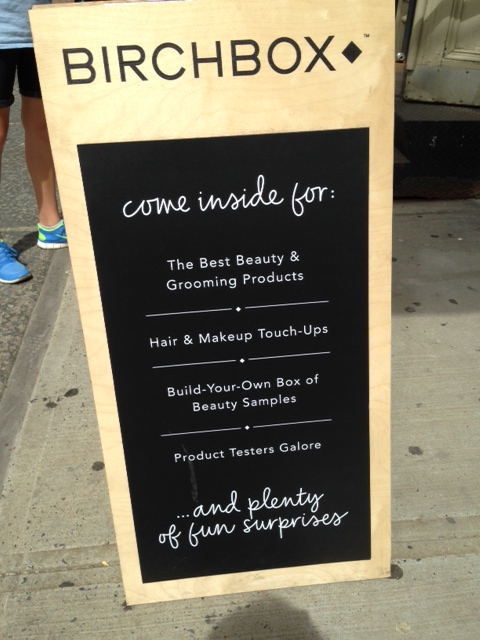
Do you believe that digital businesses will wipe out physical ones? If yes, you won't be too interested in digital-physical mashups and how they affect inbound marketing and retail. If no, read on!
The Future of Retail: Digital + Physical
Given that we are physical beings with physical needs and a deep appreciation for destination-worthy customer experiences, I doubt that brick-and-mortar businesses will be replaced by digital-only ones.
However, any business that totally ignores the online world and the fact that most customers start the purchase journey researching online will be very, very sorry.
Similarly, trying to stop showrooming when customers depend on mobile devices isn't productive. Better to figure out how digital devices might improve the customer experience (see Showrooming Precipitates Retail Business Innovation).
The future of retail (and any other business) is truly about physical + digital. E-Commerce Is Not Eating Retail confirms that,
"There’s no doubt that digital technology is transforming the retail industry. Digital devices are changing how customers discover, evaluate, purchase, receive, use, and return products. And, yes, more and more customer interactions take place entirely online."
However, what's become more obvious with the maturing of digital retail businesses is that the physical retail experience of interacting with product and people during the purchase process can be magical. And, although more elements of the purchase process than ever before take place online (see Inbound Marketing and ZMOT: Perfect Together?), the actual sale seems to happen in-store, as the article explains,
"About half of those e-commerce sales are actually going to retailers with physical stores. Brick and mortar retailers still control between 94% and 97% of total retail sales. Several large store-based retailers (including Apple and Macy’s are growing their e-commerce sales even faster than Amazon."
Furthermore,
"It’s more and more difficult to distinguish e-commerce sales from others. Imagine that a customer goes to a Macy’s store, learns that the product is out of stock, and uses her smartphone to order the product from another Macy’s outlet, which ships it to her home the same day. Is that an e-commerce sale or a physical one?"
Your Digital Presence = Front Door to Your Store. Your Store = Inspiration Site, Testing Lab and More
The conclusion:
"... For omnichannel retailers, websites and mobile apps are not just e-commerce ordering vehicles, they are front doors to the stores. Stores are not just showrooms, they are digitally-enabled inspiration sites, testing labs, purchase points, instantaneous pickup places, help desks, shipping centers, and return locations."
Isn't is fascinating that companies which started out as digital retailers are now adding physical locations. More specifically: Warby Parker, BirchBox, Bonobos has Guideshops, Zappos and more. Rather than wiping out traditional organizations, the digital influence is creating a mashup between digital and physical - aka “digical” - that has the potential to create for customers a seamless experience, which matches how they do research, shop and buy, moving from online to in-store to mobile device and back.
In the photo below. see how Warby Parker celebrates physical and digital milestones.

Are You Ready to Mashup in October 2014 issue of Designretailonline.com says that the "...reality is that shoppers "'weave their digital and physical worlds so tightly together that they cannot fathom why (retailers) haven't done the same."
Imagine mashing up the best of both worlds to create a totally intuitive customer retail experience as Birchbox does below!

Digital-Physical Mashups Require Inbound Marketing Thinking
Successful digital-only businesses became successful by intensely pursuing a customer-centric approach to business. How else could they overcome trust-related concerns potential customers might have dealing with a business with no physical store front or people to run to in case of problems?
They embrace social networks to help communicate their humanity and better connect with customers hanging out there. They learn how to educate and listen and provide value online using the tools of inbound marketing (see 21 Inbound Marketing Definitions vs. Outbound and Inbound Marketing Definition: Build Trust, Generate Leads). They have identified personas and deliberately work to meet their information needs. They invest in content and value digital marketing; they analyze and test offers, emails and updates; they monitor ecommerce results and nurture ongoing customer relationships.
In comparison, physical-only businesses have been sloppy. Many don't even capture email addresses in-store. Their websites often need updating and integration across platforms hasn't been considered.
Digital-physical mashups break through barriers. They assume customers are mashing it up and intend to keep up. They think of their website as an adjunct to their physical business.
If you recognize that customers weave the digital and physical worlds seamlessly, then you will want to treat your digital presence as seriously as you do your physical showroom space. That means keeping it up-to-date, filled with educational materials and information to help inform prospective customers as they do their due diligence online.
Ultimately, few business can survive without a digital physical mashup - especially if customers are already mashing it up between their smart phones, desktops, tablets and other devices.
What do you think?







